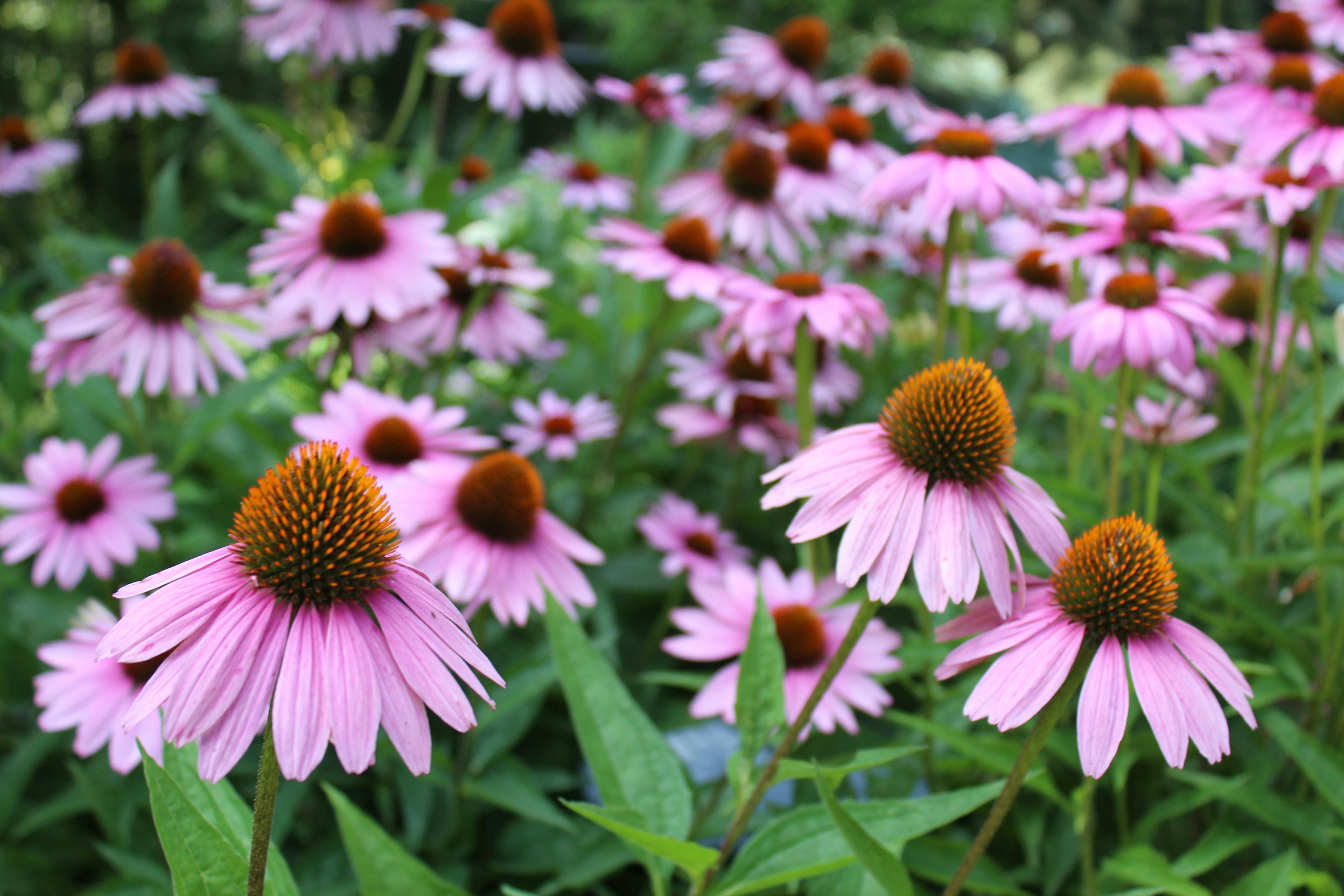
How to Grow and Care for Stokes’ Asters
Have you ever dreamed of adding a splash of vibrant color to your garden that lasts through late summer and fall? Stokes’ asters, with their stunning, star-shaped flowers and hardy nature, could be just what you need! These perennial beauties not only bring a cheerful burst of color but are also relatively easy to care for, making them an excellent choice for both novice and experienced gardeners. Let’s dive into the essential aspects of growing and caring for Stokes’ asters to ensure they thrive and keep your garden looking fabulous.
1. Understanding Stokes’ Asters
Stokes’ asters, scientifically known as Stokesia laevis, are native to the southeastern United States and are renowned for their striking blooms that resemble daisies. These perennials are characterized by their large, daisy-like flowers with fringed petals, which come in various shades of blue, lavender, and white. They typically bloom from midsummer to fall, providing a long-lasting display of color. Stokes’ asters are known for their resilience and adaptability, thriving in a variety of garden settings and soil types. Understanding their growth habits and preferences is the first step to ensuring they flourish in your garden.

2. Choosing the Right Location
Selecting the ideal location for Stokes’ asters is crucial for their growth and overall health. These plants thrive in full sun to partial shade, which means they require at least six hours of direct sunlight each day to bloom optimally. In regions with intense summer heat, providing some afternoon shade can help protect the plants from scorching temperatures and extend their blooming period. Ensure that the chosen spot has well-draining soil, as Stokes’ asters are susceptible to root rot in waterlogged conditions. To enhance drainage, consider planting them in raised beds or containers if your soil tends to retain too much moisture.

3. Soil Preparation
Proper soil preparation is essential for the healthy growth of Stokes’ asters. These plants prefer soil that is rich in organic matter and has good drainage. Start by testing your soil’s pH; Stokes’ asters thrive in slightly acidic to neutral soil, with a pH range of 6.0 to 7.0. Amend heavy or clayey soils with compost or well-rotted manure to improve texture and drainage. If your soil is sandy, mix in organic matter to enhance moisture retention and nutrient content. Incorporating a balanced, slow-release fertilizer into the soil before planting can provide a nutrient boost that supports robust growth and vibrant blooms.

4. Planting Stokes’ Asters
When planting Stokes’ asters, timing and technique are important for establishing strong, healthy plants. The best time to plant is in early spring or fall, allowing the plants to establish their root systems before extreme temperatures set in. Space the plants about 12 to 18 inches apart to ensure adequate air circulation and room for growth. Dig a hole that is twice as wide as the root ball and slightly shallower to accommodate the plant’s roots. Gently place the plant in the hole, ensuring that the top of the root ball is level with the surrounding soil. Backfill the hole with soil, tamping it down lightly, and water thoroughly to remove air pockets and settle the soil around the roots.

5. Watering and Fertilizing
Proper watering and fertilizing are key to maintaining the health and vitality of Stokes’ asters. Water the plants regularly, especially during dry periods, to keep the soil consistently moist but not soggy. It’s important to water at the base of the plant to avoid wetting the foliage, which can lead to fungal diseases. Mulching around the plants with organic mulch can help retain soil moisture and reduce weed competition. Fertilize Stokes’ asters once in early spring with a balanced, all-purpose fertilizer. Avoid over-fertilizing, as excessive nutrients can lead to lush foliage at the expense of blooms. A second application of fertilizer in midsummer can support continued flowering.

6. Pruning and Deadheading
Regular pruning and deadheading are essential practices for promoting healthy growth and prolonging the blooming period of Stokes’ asters. Deadheading, or removing spent flowers, encourages the plant to produce more blooms and prevents the development of seed heads, which can divert energy from flower production. Use clean, sharp scissors or pruning shears to snip off faded flowers just above the next set of healthy buds. In addition to deadheading, cutting back the plant by one-third after the initial bloom can stimulate a second flush of flowers and help maintain a compact, attractive shape. In late fall or early spring, remove any dead or damaged stems to prepare the plant for the growing season.

7. Pest and Disease Management
Stokes’ asters are relatively pest-resistant but can occasionally be affected by certain issues. Common pests include aphids, spider mites, and caterpillars. Regularly inspect your plants for signs of pests and use insecticidal soap or neem oil to manage infestations. Fungal diseases, such as powdery mildew and rust, can also affect Stokes’ asters, especially in humid or overcrowded conditions. To prevent fungal issues, ensure proper spacing between plants for good air circulation and avoid overhead watering. If disease symptoms appear, remove affected plant parts and apply a fungicide if necessary. Maintaining good garden hygiene and monitoring plant health will help prevent and address potential problems.

8. Winter Care
Preparing Stokes’ asters for winter is important to ensure they survive the colder months and return healthy in spring. In regions with mild winters, Stokes’ asters generally require minimal protection. Apply a layer of mulch around the base of the plants to insulate the roots and prevent frost damage. In areas with harsh winters, consider cutting back the foliage to about 4 to 6 inches above the ground and covering the plants with a thicker layer of mulch or straw. This additional insulation will protect the roots from freezing temperatures. Once the danger of frost has passed in spring, remove the mulch to allow new growth to emerge.

9. Propagation
Propagation of Stokes’ asters can be done through seed sowing or division. Starting from seeds is an effective way to grow new plants, although it requires patience. Sow seeds indoors about 6 to 8 weeks before the last frost date, or directly in the garden after the risk of frost has passed. Lightly cover the seeds with soil and keep them moist until they germinate. For a quicker method, you can propagate Stokes’ asters by dividing established plants. In early spring or fall, carefully dig up the plant and separate the root ball into smaller sections, ensuring each section has roots and shoots. Replant the divisions in well-prepared soil, spacing them as you would with new plants.

10. Companion Plants
Stokes’ asters make excellent companions in garden beds and containers due to their versatile nature and attractive blooms. Pair them with other perennials such as coneflowers, black-eyed Susans, or ornamental grasses to create a dynamic and colorful garden display. Their vibrant flowers also complement the foliage of shrubs and low-growing ground covers. When planning your garden layout, consider combining Stokes’ asters with plants that have similar sunlight and soil requirements to ensure a cohesive and harmonious garden design. The mix of textures and colors will enhance the visual appeal and create a garden that thrives throughout the growing season.
Stokes’ asters are a delightful addition to any garden, offering vibrant color and resilience with relatively low maintenance. By understanding their specific needs and following these detailed care tips, you can ensure that your Stokes’ asters not only survive but thrive, providing a stunning floral display that brightens your garden from summer through fall.



